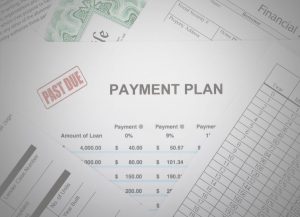At some point in your life, you may need to think about getting a loan. Whether it is a student loan to help you get through college, an auto loan to help you purchase a car, or a home loan for your first house.
Loans and lines of credit are a crucial part of life, so this Finance 101 article covers the most common types of loans and credit lines. If you need any type of loan, make sure you shop around to compare and get the best rate.
There are many different lenders who have different requirements. Finding the best loan for you shouldn’t be overwhelming!
Loans
Personal Loans
A personal loan is issued for personal reasons. Personal loans are often used to pay off other debts to consolidate debt. Personal loans are also used to fund large purchases.
Since credit cards often have higher interest rates than loans, a loan is a good option for purchasing a large or expensive item on credit.
Banks and lending companies offer personal loans. Based on your current credit situation, income and expenses, personal loans can range in amounts from as little as $500 to as high as $100,000. Interest rates for personal loans range from 8%-15%, with good credit.
Student Loans
A student loan is issued to college students to help fund tuition, books, housing, and more while in school. The federal government and private lenders issue student loans.
Most student loans are deferred until the person graduates. With a subsidized student loan, interest does not accrue while students are still in school.
Student loans also have lower interest rates than other loans. While student loans are designed to help people get a college education, it is common for students to graduate from school with more than $25,000 in debt from student loans.
Looked into grants and scholarships before student loans. Thinking about refinancing your student loans? Read Refinancing Your Student Loans for some much-needed information.
Auto Loans
As you’ve probably guessed, an auto loan is a loan issued to a person trying to finance a car. A bank or lending company issues auto loans. The dealer where you purchase the vehicle often facilitates the process, but you have the option of shopping around for the best rate and term if you’d like.
Auto loans range from a term of 12-72 months with interest rates as low as 2%, depending on your credit.
Since a car depreciates in value over time, getting the lowest term you can afford is best to avoid overpaying interest. If your car is already paid off, a title loan can be taken against your vehicle.
A title loan is a secured loan where the user puts the vehicle up for collateral. The lending company places a lien on the car in exchange for the vehicle amount. The lien is lifted when the title loan is paid off.
Home Loans
A home loan, also known as a mortgage, is a loan is issued to help fund the payment for a piece of property. Like most loans, a bank or lending company issues the loan, while payment goes to the previous property owner.
Home loans and auto loans are issued on behalf of an individual or a company. If you have a business that rents out properties, then having the loan issued in the company’s name to purchase the property is ideal.
If you are using the house as your primary place of residence, then the loan is issued on behalf of the person purchasing the property. Home loans range from 15-30 years with interest rates varying based on the market.
A home is the most common asset a person will have; however, the lender has the right to seize or foreclose the property if loans go unpaid, assuming all federal and state requirements are met prior to the seizure. Read our tips on saving for your first home!
Business Loans
A business loan is a common type of loan used when starting a business. It is a loan issued to owners of a start-up company or existing business to help finance start-up costs or purchase a large item. This type of loan is issued to the business and the business is responsible for paying it back.
If the business cannot meet its financial obligations, banks will come after the business owner. Most business loans require a personal guarantee as collateral. A personal guarantee is much like a co-signer. You are now transferring liability from just the business to you and the business.
Business loans can range in any value and typically lower interest rates, pending the company’s current financials or projected financials (if it is a start-up).
Lines of Credit
Personal Lines of Credit
A personal line of credit functions like that of a credit card. You have a specific credit limit and interest rate, a monthly minimum payment, and possible fees. A personal line of credit differs from a credit card mainly because you do not receive a card for the credit line.
The credit line is usually issued from your bank, and will come with personal checks to write against it. You also have the option of transferring cash from the credit line to your personal account. Unlike a credit card, there are no additional fees for cash advances.
The benefits of using a line of credit over a credit card include lower interest rates, larger credit lines, and minimal fees.
Home Equity Line of Credit (HELOC)
A home equity line of credit, or HELOC, is a line of credit drawn against your home. The amount of credit provided in your HELOC will be determined by your bank, Mortgage Company or lender, and is usually based off of the equity (or value) in your home currently.
HELOCs are paid in full up front and have a “draw period” which is a specific amount of time until the HELOC must be paid in full, typically 10-20 years.
Sometimes coined as a second mortgage or lien, a HELOC is generally only used when there is significant value in the home. HELOCs are common for funding college tuition, major home improvements, and other large purchases.
HELOCs draw the most risk because they have adjustable interest rates that fluctuate with the market. If the housing market tanks and your interest rate goes up, you now owe much more than you originally took out.
Related: 5 Ways to Approach a Bank Loan
Well City Girls, those are the most common loan and credit line types. The best debt is no debt, but if you have to take out a loan, do your research! Shop around to find the interest rate and term that stay within your budget.
Also, remember that having a high debt to available credit ratio affects your credit score. Use your loans wisely and always make your payments on time! For more information on loans and credit lines, visit www.creditkarma.com.
Do you have any experiences (good or bad) with loans or credit lines? Did you have to take out student loans? Share your thoughts and feedback with the community by leaving a comment below!






6 thoughts on “Finance 101: Loans and Lines of Credit”
This was really helpful. I’m thinking about getting a loan from my bank
Let us know how it goes if you do get one 🙂
I started my own business. This article is very helpful for me. I think that business loan will definitely help me to fund my business. This is a very helpful and informative article.
I am getting a business loan. It definitely help me for my business to operate well. This article is very helpful. Thanks for sharing this article.
Thanks for sharing this list of loans. This will surely help me to decide which one will fit me and help me to get money. This is very useful post for person like me who’s looking for a loan.
Great article. This is totally a big help for me to get or raise money for my business. This is a very useful post for me. Thanks for sharing this article. I’ll share this to my business owner friends as well.